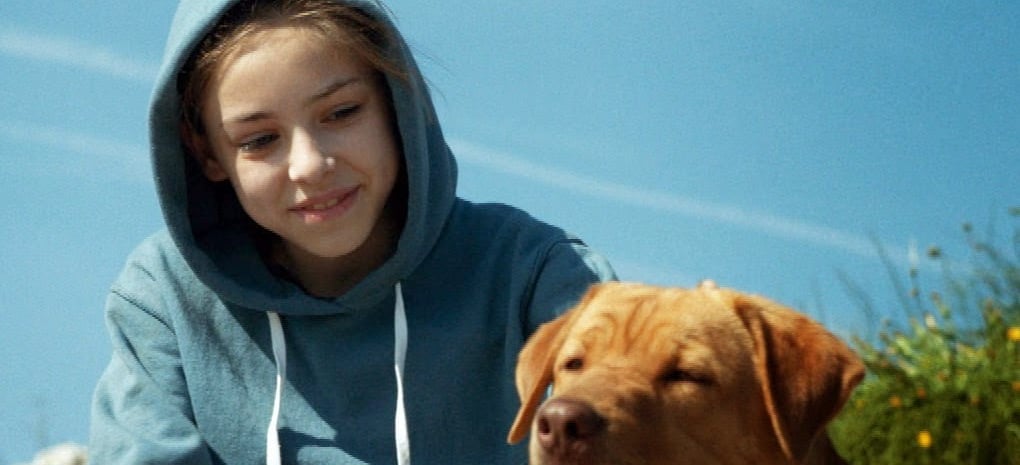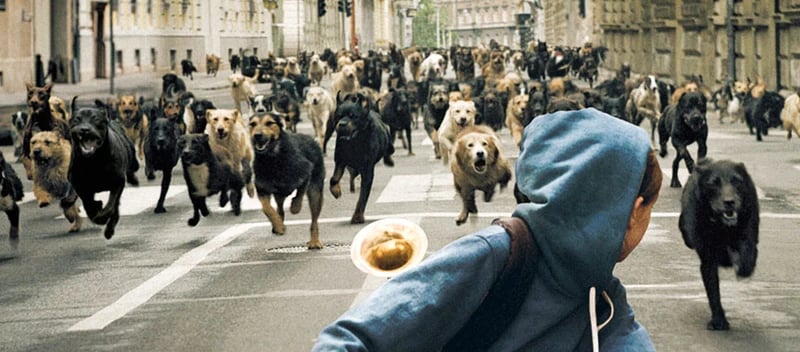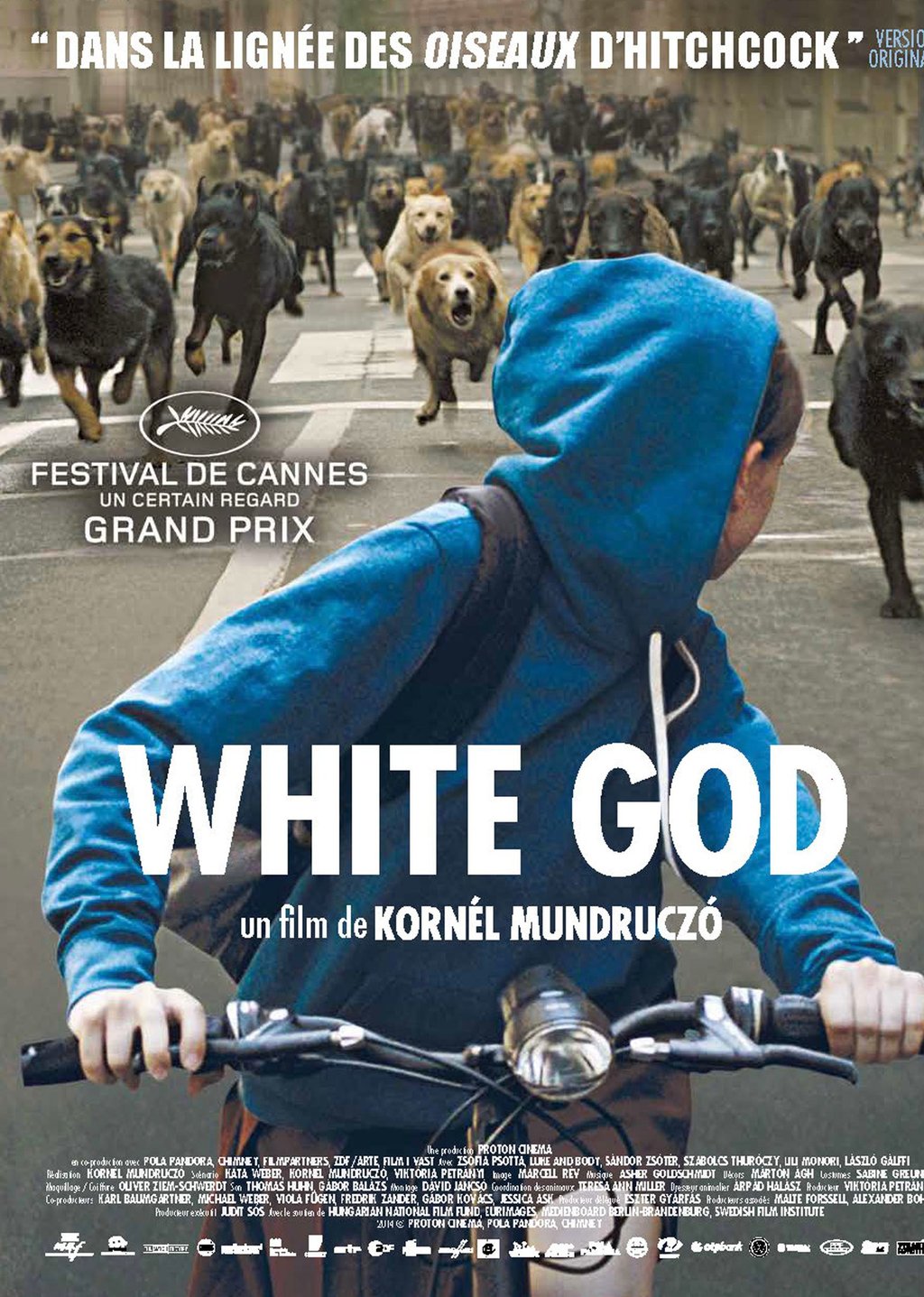White God
A fierce and unforgettable canine revolt epic that redefines justice and empathy in a society built on exclusion – directed by Kornél Mundruczó.
A Tale of Abandonment and Rebellion Set in Budapest
White God begins with thirteen-year-old Lili, a young girl navigating adolescence and adulthood in contemporary Budapest. Her father, a stern slaughterhouse inspector, disapproves of their beloved dog Hagen, a mixed-breed. When a harsh new law imposes a heavy tax on mongrel dogs, Lili’s father dumps Hagen onto the street rather than pay. This act of abandonment ignites an epic journey for Hagen, flooding the city with a moral question: what becomes of those deemed unfit by the state? As Hagen is cast aside, his world fractures into chaos and survival—a grim pilgrimage through runaway gangs of stray dogs, dogcatchers, underground fighting rings, and impound lots. Under the city’s indifferent gaze, Hagen learns fear and resistance, slowly transitioning from victim to reluctant arbiter. His ordeal parallels Lili’s isolation, both struggling to belong in a society that prizes pedigree over empathy, obedience over freedom. Kornél Mundruczó’s narrative ties the personal and political, human and animal realms, crafting a dark fable of injustice, loyalty, and retribution.
Cinematic Style: Ground-Level Reality and Canine Perspective
Mundruczó and cinematographer Marcell Rév submerge the viewer in Hagen’s world by shooting many sequences at ground level, using a hand-held 35mm camera to mimic a dog’s field of vision. Urgent motion and visceral proximity evoke empathy in untrained actors and rescue dogs alike. Scenes unfold with documentary realism—dogs chained in junkyards, dragged into cages, forced into violence—while intercut with tender long shots of Lili playing trumpet solos in a youth orchestra, evoking her longing and innocence. The editing by Dávid Jancsó intentionally jars our perception, weaving fluctuating pacing and abrupt transitions to unsettle viewers and force moral reflection. The world feels cruel but the storytelling remains poetic: Lili’s pale figure bike-riding through empty streets is mirrored by a tidal wave of dogs charging past behind her, a moment of magical realism that foreshadows broader conflict. The film positions Hagen not as a prop, but as a fully realized being—his confusion, suffering, and leadership rendered in choreographed, electrifying sequences. Visual realism and allegorical weight merge, making White God a visceral film that demands both feeling and thought.
Reception, Awards, and Critical Legacy
Premiering in the Un Certain Regard section at the 2014 Cannes Film Festival, White God won the top prize in that category. Its canine star Hagen received the prestigious Palm Dog Award for best dog performance. The film was also awarded the Octopus d’Or at the 2014 Strasbourg European Fantastic Film Festival. Hungary submitted it to the Academy Awards for Best Foreign Language Film, though it did not receive a nomination. On review aggregator sites, White God holds a 88% on Rotten Tomatoes, with consensus calling it “not an easy watch, but its soaring ambition and powerful acting make it well worth the effort”. Metacritic scores reflect similarly strong praise. Reviewers lauded its stylistic boldness and emotional clarity. Some critics cautioned that the middle act sags slightly, but agreed that the final act delivers a cathartic, unforgettable climax. The film also received festival honors across Europe, and was lauded as one of the decade’s most provocative animal-human narratives—a work as intellectually rigorous as it is emotionally affecting
Where and How to Watch
For modern audiences, White God is broadly accessible across streaming platforms. It is available for purchase or rental on Amazon Prime Video, Google Play Movies, Apple TV, and Fandango at Home, usually priced around $3–5 for rental and $10–13 for purchase in HD format, with subtitle options. In many regions, the film can also be streamed on Tubi, Kanopy, Pluto TV, Hoopla, and The Roku Channel—some free with ads or library access. Netflix offered it in select territories, though availability varies. The motion picture is rated R for emotional violence and animal distress. DVD and Blu-ray editions include behind-the-scenes interviews, director commentary, and information about the rescue program behind the canine cast. Subtitles in English and multiple languages are widely available. Viewers of animal-centric or socially conscious cinema will find in White God both raw intensity and symbolic power suitable for discussion and rewatching.


Themes and Allegory: Class, Otherness, and Collective Uprising
Although Hagen’s story begins as a literal abandonment, it gradually assumes mythic, political resonance: the unleashed pack becomes a symbol for oppressed groups rising toward justice. The film critiques prejudice tied to origins: mixed-breed dogs versus purebreds; native citizens versus outsiders. Lili’s father represents conformist authority: rationalizing cruelty to fit social norms. Hagen’s revolt—rallying unwanted dogs into an unstoppable force—channels echoes of Spartacus, with canines rebelling against their human overlords in a reckoning of pain and vengeance. Critics have noted that the movie invites multiple readings: animal rights parable, political allegory, feminist uprising (as Hagen becomes a "white god" heralding revolt), and coming-of-age narrative. But what glues these is empathy for non‑humans, and a commentary about how systemic cruelty eventually provokes retaliation. The alliance between girl and dog emerges as a counterweight to mass oppression. Lili’s final trumpet performance—in the abandoned slaughterhouse—transforms violence into reconciliation, as Hagen and the pack lie suppressed but peaceful around her. The film tests our allegiance—will we chase justice or remain complicit in cruelty?
Performance and Animal Direction as Emotional Arsenal
Actress Zsófia Psotta brings depth to Lili—not as victim, but as emotional counterpart in her delicate estrangement from parental authority. Her physical stillness counters the feral urgency of Hagen’s journey. The dog Hagen, portrayed by two canine actors, Body and Luke, delivers one of cinema’s most unforgettable performances. The dogs were rescued from shelters, trained humanely, and nearly all were adopted after filming—echoing the film’s thematic emphasis on empathy and redemption. Mollifying illusions of filmic spectacle, Mundruczó treats the dogs as natural actors, filming real reactions, fatigue, and interaction rather than CGI facsimiles. In scenes of the canine revolt—hundreds of dogs in anarchic pursuit—the film stages choreography with care and authenticity. Critics praised the film’s ability to convey emotion through animals rather than words: fear, rage, loyalty, grief, all conveyed in fur, ears, stance, growl. Lili’s eventual recognition of Hagen amidst chaos crystallizes the film’s emotional heart: the bond between child and dog as a site of moral awakening.






Awarded with the Highest Distinction
White God earned the Excellence Award for its daring cinematic allegory, extraordinary animal-human storytelling, and political resonance in the form of a dog-led uprising that holds a mirror to societal cruelty. It is worth watching not just for its visceral spectacle but for its ethical vision—where empathy becomes revolution, and where one girl and one dog challenge a system built on exclusion. It remains a bold, unforgettable film of rebellion, relationship, and redemption.







